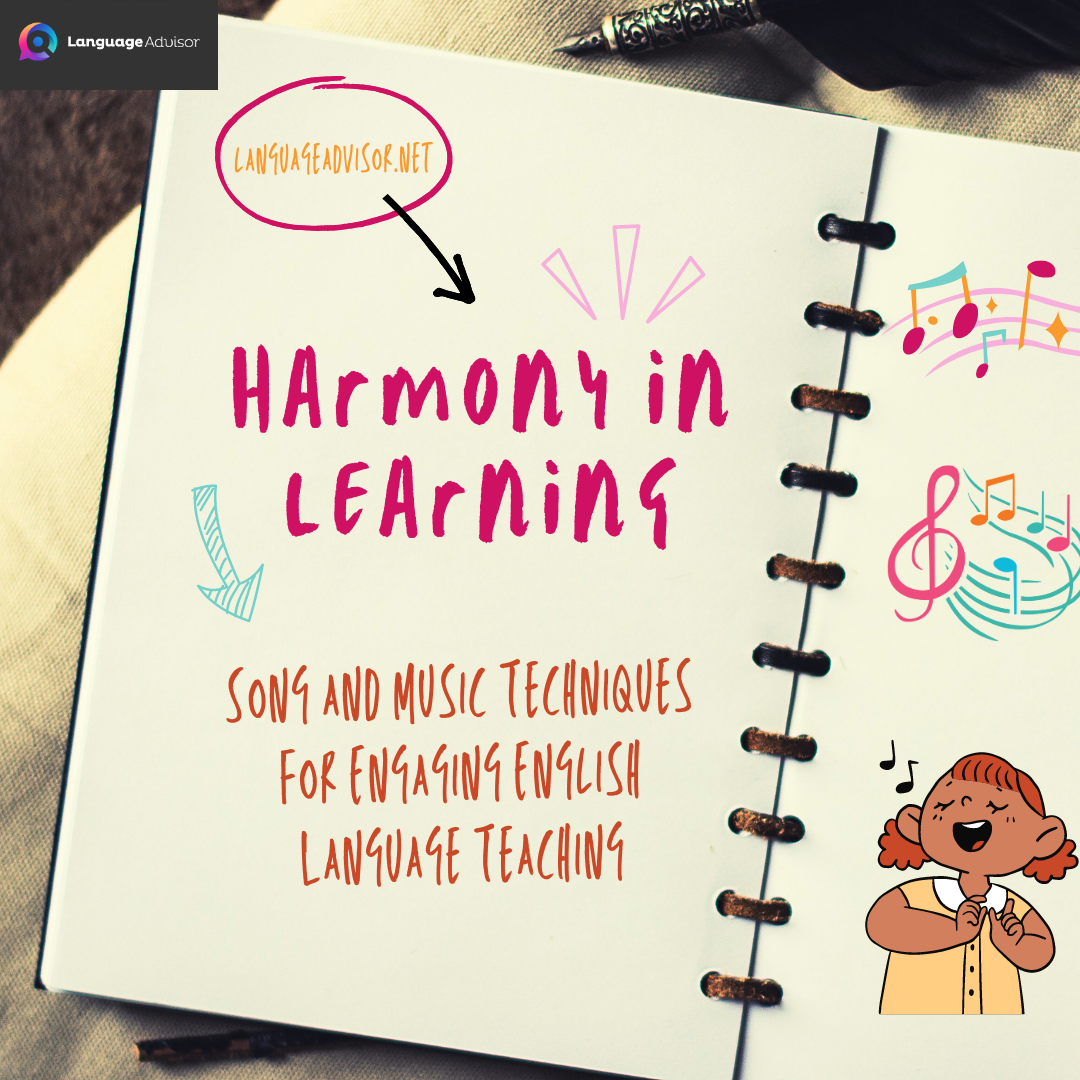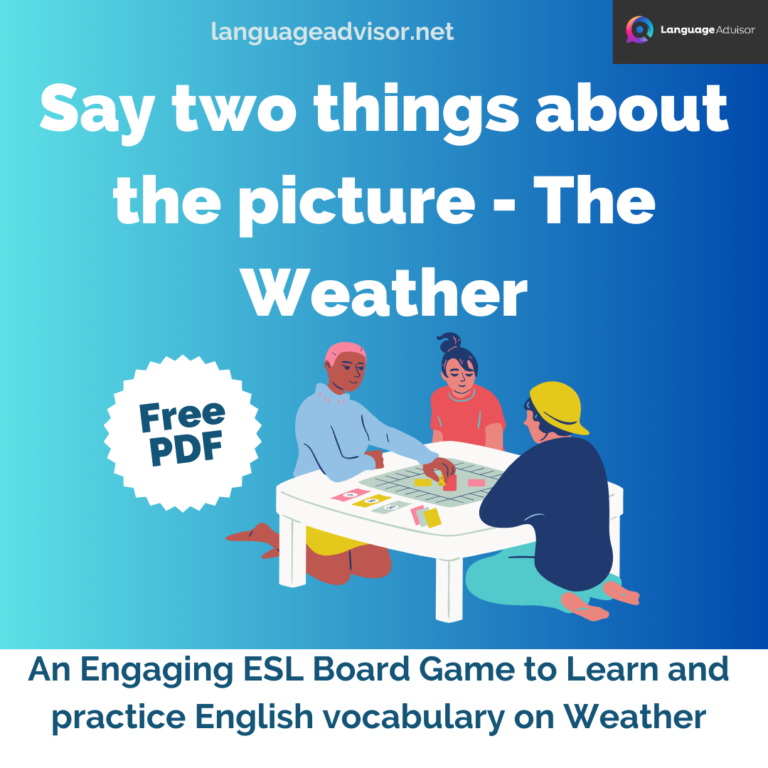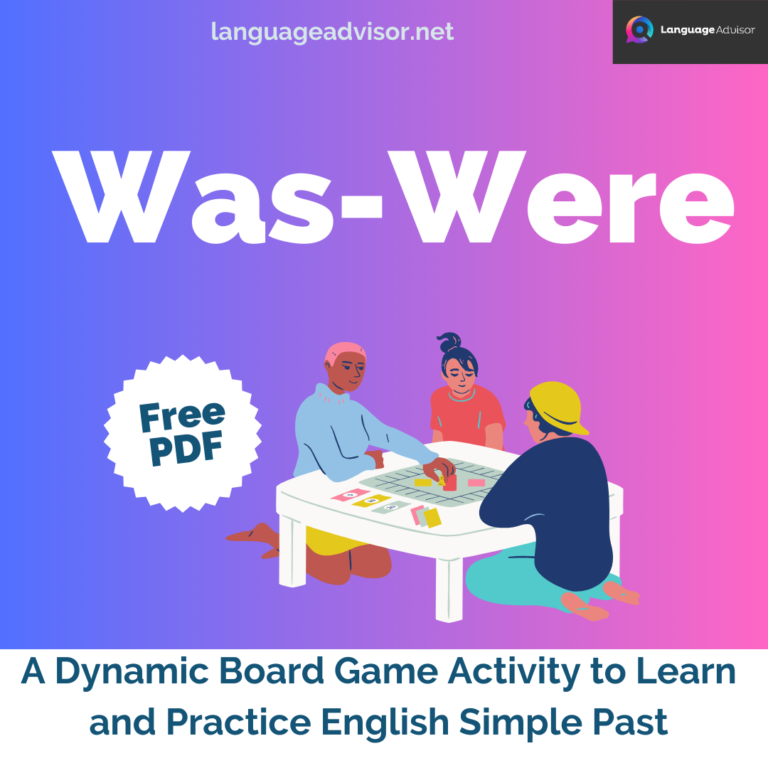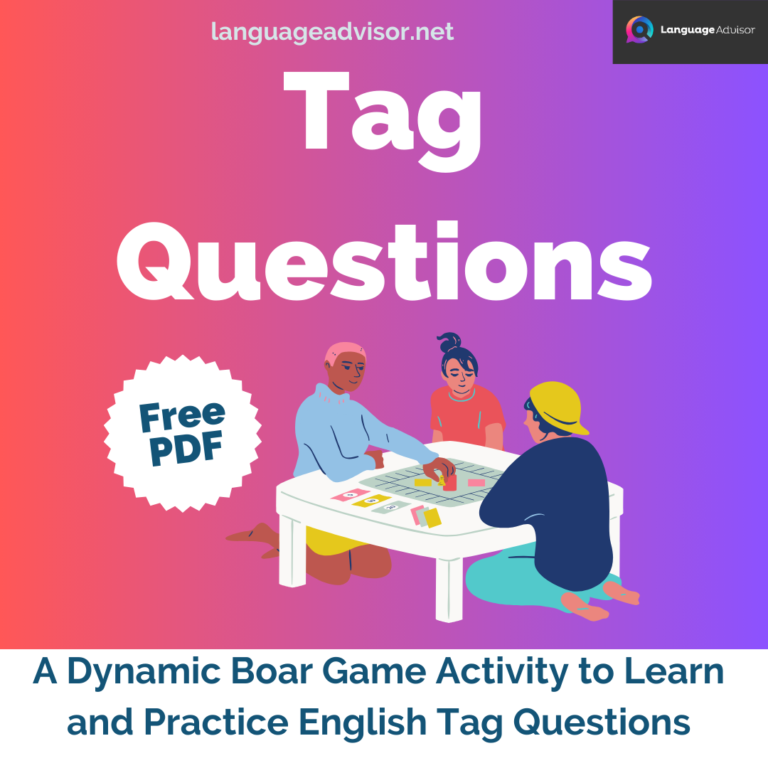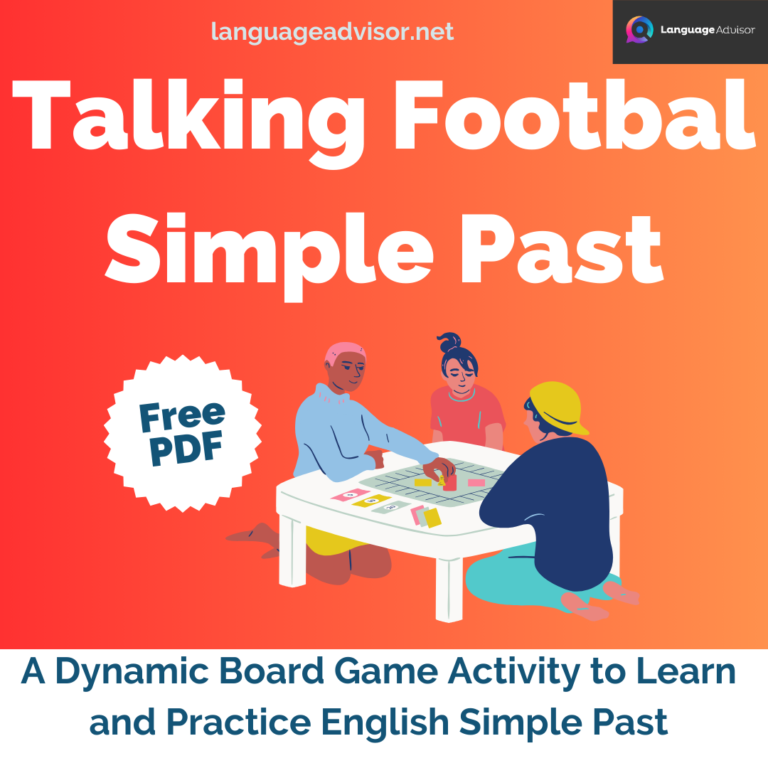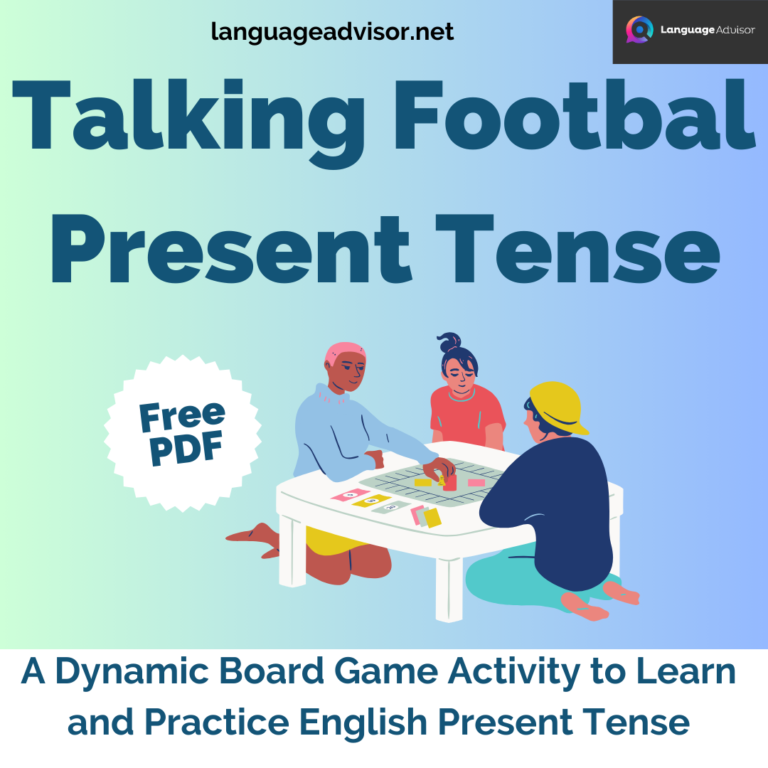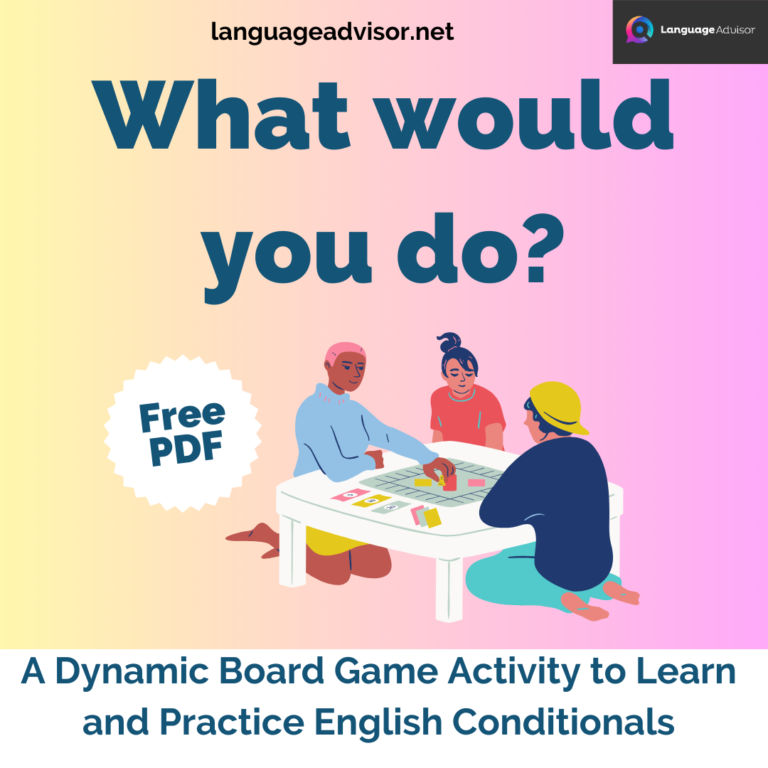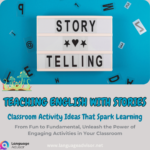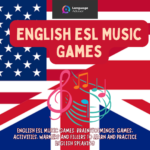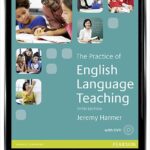Harmony in Learning: Song and Music Techniques for Engaging English Language Teaching
Harmony in Learning: Song and Music Techniques for Engaging English Language TeachingG

Harmony in Learning: Song and Music Techniques for Engaging English Language Teaching
The following techniques, presented with permission from D. Griffee, Tokai Jr. College (Tokyo), S. Brown, Univ. of Pittsburgh (Tokyo), M. Helgesen, Univ. of Pittsburgh (Tokyo), J. Sauber, New Day School (Sendai), offer innovative approaches to incorporate songs effectively into English language teaching.
Drawing Dictation: Before students listen, the teacher dictates a scene from a song, fostering creativity. For example, for “I Left My Heart in San Francisco,” the dictation might include instructions like “Draw a home. Draw a cable car.” Discussing the drawings then seamlessly introduces or transitions to the song.
Pronunciation: Receptive and expressive pronunciation exercises involve playing the song first, distributing the song’s text (potentially with IPA transcriptions for challenging parts), and having students follow along. The teacher then articulates the lines as the singer does, prompting students to match the articulation.
Fill in the Grid: Students listen for specific information, such as times or actions, in this engaging exercise.
Singing Period: Allocate dedicated singing periods twice a week to reinforce vocabulary and help students internalize songs effectively.
Teaching Students to Sing: Lead by example by singing the song repeatedly, creating a supportive environment. Encourage students without criticism, and consider incorporating a toy karaoke microphone to ease tension. Adjusting the setting, such as facing windows, can also make singing feel more comfortable.
Drill 1: Provide alternatives for lyrics in a multiple-choice format, with students selecting the grammatically correct option before or during listening.
Drill 2: Present alternatives for lyrics, all grammatically correct and meaningful. Students identify the item used in the song.
Draw a Picture: After or during listening, students draw a picture inspired by the song. This particularly suits instrumental music, fostering creativity and discussion.
Song Survey: Students survey classmates to discover favorite songs, enabling comparisons within the class and across other classes.
Categories: In small groups, students brainstorm songs and decide on categories, encouraging critical thinking and comparison.
Count the Words: As a simple listening exercise, students count how many times they hear a particular word.
Parts of Speech 1: For words with multiple parts of speech, students count the occurrences as nouns, verbs, etc.
Parts of Speech 2: “Cloze” a specific part of speech being studied, having students fill in the blanks or predict the missing words before listening.





Harmony in Learning
BINGO
There was a farmer who had a dog,
And Bingo was his name- oh!
B-I-N-G-O, B-I-N-G-O, B-I-N-G-O
And Bingo was his name- Oh!
There was a farmer who had a dog,
And Bingo was his name- oh!
-I-N-G-O, -I-N-G-O, _-I-N-G-O
And Bingo was his name- Oh!
(Repeat 4 more times, each time leaving out one more letter of the name and replacing it with a clap.)





HEAD AND SHOULDERS
Head, shoulders, knees, and toes
Knees and toes
Head, shoulders, knees, and toes
Knees and toes
And eyes, and ears, and mouth, and nose
Head, shoulders, knees, and toes
Knees and toes
(Repeat several times, each time omitting a body part and replacing it with a hum until you are humming the entire song.)





HOKEY POKEY
Put your (right hand) in
Take your (right hand) out
Put your (right hand) in
And shake it all about.
You do the Hokey Pokey
And you turn yourself around,
That’s what it’s all about.
(Also: use foot, head, hip, whole body, etc…)
Also check out these communication activities





IF YOU’RE HAPPY
If you’re happy and you know it clap your hands (clap, clap)
If you’re happy and you know it clap your hands (clap, clap)
If you’re happy and you know it,
Then you really want to show it1
If you’re happy and you know it clap your hands (clap, clap)
If you’re happy and you know it, stomp your feet (stomp, stomp)
If you’re happy and you know it, stomp your feet (stomp, stomp)
If you’re happy and you know it,
Then you really want to show it.
If you’re happy and you know it, stomp your feet (stomp, stomp).
If you’re happy and you know it, shout “hooray” (“hooray”)
If you’re happy and you know it, shout “hooray” (“hooray”)
If you’re happy and you know it,
Then you really want to show it
If you’re happy and you know it, shout “hooray” (“hooray”)
If you’re happy and you know it, do all three (clap, clap, stomp, stomp, “hooray”)
If you’re happy and you know it, do all three (clap, clap, stomp, stomp, “hooray”)
If you’re happy and you know it,
Then you really want to show it.
If you’re happy and you know it, do all three (clap, clap, stomp, stomp, “hooray”)
Also try:
Hungry – Rub your tummy (rub-rub)
Sad – Cry Boo-hoo (boo-hoo)
Scared – Run and hide (oh-no)
Tired – Go to bed (snore)
Hot – Wipe your head (it’s hot)
Silly – Run around (woo-hoo)
1 This line is also often sung as, “Then your face will surely show it”





OLD MACDONALD
Old MacDonald had a farm, E-I-E-I-O
And on this farm he had a cow, E-I-E-I-O
With a moo, moo here, and moo, moo there
Here a moo, there a moo, everywhere a moo, moo
Old MacDonald had a cow, E-I-E-I-O
(Replace animals and sounds: cat/meow, dog/bow wow, etc.)





Harmony in Learning
ROW, ROW, ROW YOUR BOAT
Row, row, row your boat
Gently down the stream
Merrily, merrily, merrily, merrily
Life is but a dream.





Harmony in Learning – Also check out these activities for kids





Did you find this article useful? If you have additional ideas, share them in the comments section below






